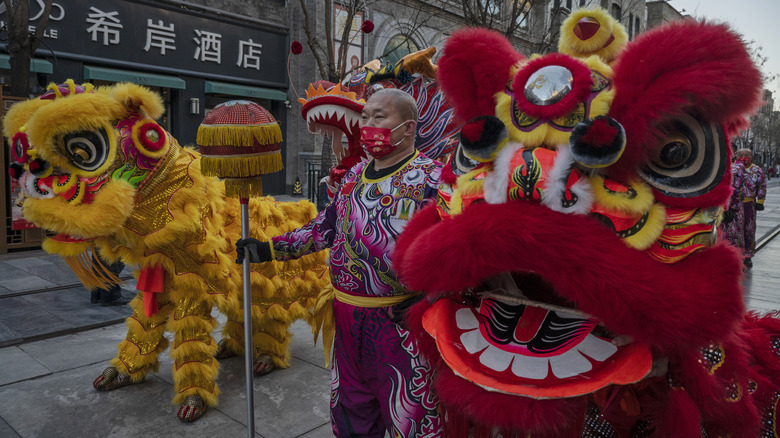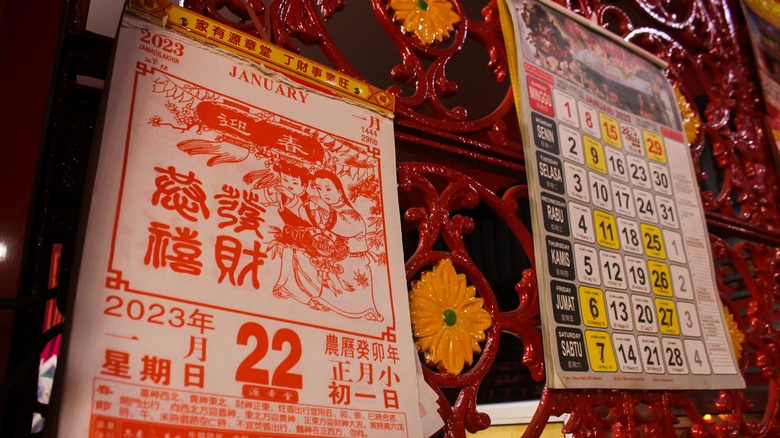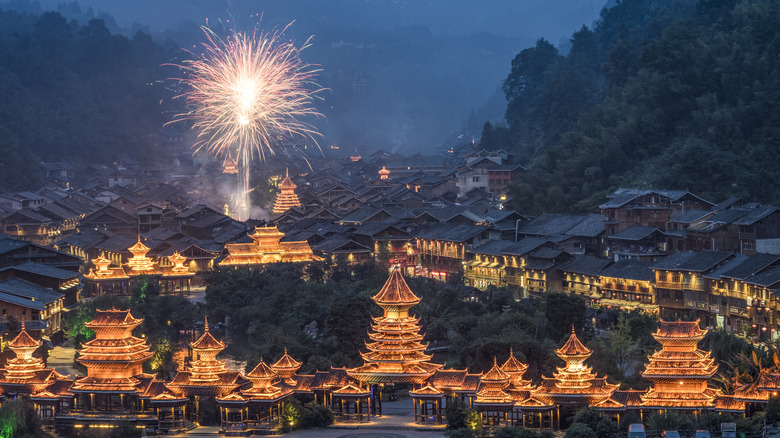History Of Lunar New Year Explained
In many Western cultures, New Year's Eve takes place on December 31, and is one of the most widely celebrated events in the cultural calendar, with huge street parties, fireworks, and singalongs to welcome in the coming 12 months. The timing is, of course, the result of counting days on the Gregorian Calendar, a 12-month system first imposed by the Catholic Church on its European followers in 1582. It eventually became standard among most nations on the planet.
But for millions of people worldwide, the true New Year celebrations take place a few weeks later, over the Lunar New Year. The Lunar New Year is based on the lunisolar calendar, meaning that the waxing and waning of the moon is taken into account alongside Earth's circumnavigation of the sun. The start of Lunar New Year begins with the new moon — the opposite of a full moon — most equidistant between the winter solstice and the spring equinox. The Lunar New Year is especially important in China, despite the country officially adopting the Gregorian Calendar in 1912, and in other places in East Asia such as Korea and Vietnam. Today, the Lunar New Year is a major global event, with the Asian diaspora establishing the celebration as a tradition throughout the world.
An ancient calendar system
The roots of Lunar New Year as an annual celebration are believed to go back thousands of years to ancient farming communities looking forward to the coming of spring and future harvests. A standardized system is said to have been put in place in China 2698 B.C. This system involves counting the years in cycles of 12 that correspond to the Chinese Zodiac.
The Chinese Zodiac is made up of 12 animals: rat; ox; tiger; rabbit; dragon; snake; horse; sheep; monkey; rooster; dog; and pig, although some of the animals vary in other cultures. Each year corresponds to one creature — 2024, for example, shall be the Year of the Dragon. The zodiac is repeated five times in the traditional Chinese lunar calendar, with different names for each year, 60 years in total, after which the years are repeated. The traditional Chinese lunar calendar also has a different system for leap years, with a 13th month being inserted in certain years depending on the number of new moons.
It is now known as Spring Festival in China
As Professor Haiwang Yuan of Western Kentucky University, explains, despite the nation of China and others officially adopting the Gregorian Calendar to align with geopolitical and historical concerns, the Lunar New Year is observed throughout Asia by ordinary people as the system by which the timings of folk celebrations such as the Lunar New Year are decided.
After the revolution of 1911, the Lunar New Year in China became more commonly referred to as the "Spring Festival," but a strong sense of tradition remains. Families gather to eat food laced with symbolism intended to usher in good fortune in the year ahead, such as fish and dumplings, while the wearing of new clothes is also considered a fortuitous ritual. Children are often given red envelopes containing cash gifts.
Families also light traditional firecrackers, as well as more modern rocket-type fireworks that light up the sky. As well as being a source of entertainment, pyrotechnics serve a superstitious function. In ancient China, legend had it that a fierce beast named Nian would attack villages at the start of the Lunar New Year, and firecrackers developed as a method of scaring the beast away, while dragon costumes representing Nian have become another centerpiece of the celebrations.


